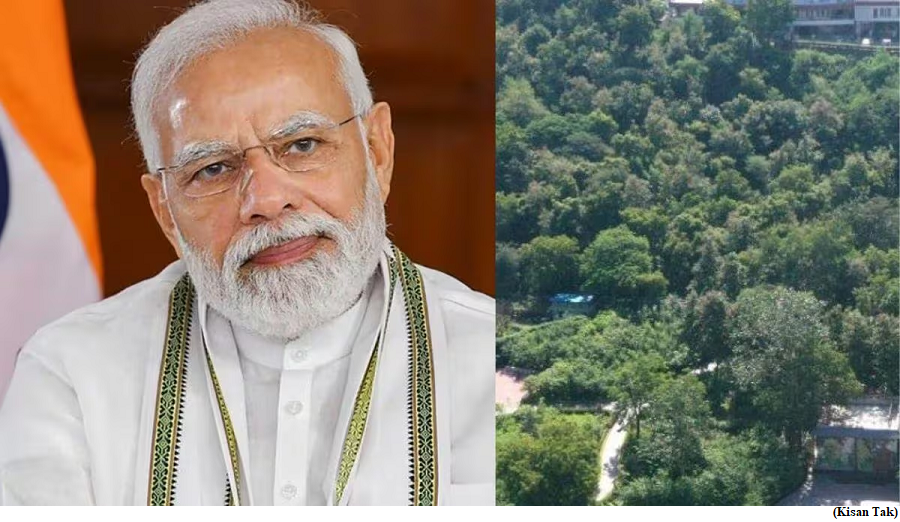Gandhi Peace Prize for 2021 to be conferred on Gita Press, Gorakhpur (Miscellaneous)

Why in news?
- The Gandhi Peace Prize for the year 2021 is being conferred on Gita Press, Gorakhpur.
- It was chosen in recognition of it’s outstanding contribution towards social, economic and political transformation through non-violent and other Gandhian methods.
About Gandhi Peace Prize:
- Gandhi Peace Prize is an annual award instituted by Government of India in 1995, on the occasion of 125th Birth Anniversary of Mahatma Gandhi as a tribute to the ideals espoused by Mahatma Gandhi.
- The award is open to all persons regardless of nationality, race, language, caste, creed or gender.
- The award carries an amount of Rs. 1 crore, a citation, a plaque and an exquisite traditional handicraft/handloom item.
Past awardees:
- The past awardees include organizations such as ISRO, Ramakrishna Mission, Grameen Bank of Bangladesh, Vivekananda Kendra, Kanyakumari, Akshaya Patra, Bengaluru, Ekal Abhiyan Trust, India and Sulabh International, New Delhi.
- Recent awardees include Sultan Qaboos Bin Said Al Said, Oman (2019) and Bangabandhu Sheikh Mujibur Rahman (2020), Bangladesh.
About Gita Press:
- Established in 1923, Gita Press is one of the world’s largest publishers, having published 41.7 crore books in 14 languages, including 16.21 crore Shrimad Bhagvad Gita.
- The institution has never relied on advertisement in its publications, for revenue generation. Gita Press along with its affiliated organizations, strives for the betterment of life and the well being of all.
Scientists discover duck-billed dinosaur roamed Chile 72 million years ago
(GS Paper 3, Science and Technology)
Why in news?
- A duck-billed herbivorous dinosaur roamed the ancient and remote river plains of Patagonia in southern Chile some 72 million years ago, a new study recently revealed.

Why name Gonkoken nanoi?
- Gonkoken is a combination of two words from the Aonikenk language. ‘Gon’ means similar or similar to and ‘koken’ means wild duck or swan.
- The indigenous Aonikenk people inhabited Patagaonia until the end of the 19th century.
- While ‘nanoi’ is in recognition of Mario ‘nano’ Ulloa, a former ranch keeper who provided the team with logistical support during the first discoveries.
Key features:
- Scientists have dubbed the dinosaur Gonkoken nanoi.
- It weighed up to a metric ton and could grow to 4 meters (13.12 feet) in length.
- Gonkoken nanoi is not an advanced duck-billed dinosaur, but rather an older transitional duck-billed lineage: an evolutionary link to advanced forms.
Background:
- In 2013, an expedition led by the Chilean Antarctic Institute (INACH) discovered fragments of yellowish bones at the bottom of a hillside close to the major tourist destination Torres del Paine in Patagonia. This kicked off an almost decade-long investigation.
- The extensive research allowed scientists to digitally reconstruct the skeleton and the team is hoping to 3D print it to display it to the public.
PM Modi talks of Miyawaki forests in Mann ki Baat
(GS Paper 3, Environment)
Why in news?
- Recently, the Prime Minister during his latest ‘Mann ki baat’ episode spoke about Miyawaki plantation, the Japanese method of creating dense urban forests in a small area.

Examples:
- He also cited the example of a Kerala-based teacher, Raafi Ramnath, who used the Miyawaki technique to transform a barren land into a mini forest called Vidyavanam by planting 115 varieties of trees.
- Meanwhile, to fight climate change, curb pollution levels, and increase the green cover of the financial capital, the Brihanmumbai Municipal Corporation (BMC) has been creating Miyawaki forests in several open land parcels of Mumbai.
What is the Miyawaki plantation method?
- Named after Japanese botanist Akira Miyawaki, this method involves planting two to four different types of indigenous trees within every square metre. In this method, the trees become self-sustaining and they grow to their full length within three years.
- The methodology was developed in the 1970s, with the basic objective to densify green cover within a small parcel of land.
- The plants used in the Miyawaki method are mostly self-sustaining and don’t require regular maintenance like manuring and watering.
- Over the years, this cost effective method has become the go-to solution for the civic body to restore the green cover in a space-starved city like Mumbai.
How is Miyawaki useful?
- The dense green cover of indigenous trees plays a key role in absorbing the dust particles of the area where the garden has been set up. The plants also help in regulating surface temperature.
- Some of the common indigenous plants that are used for these forests include Anjan, Amala, Bel, Arjun and Gunj.
- With several infrastructure projects like real estate metro rail construction in progress in Mumbai over the past few years, it was recorded that the surface temperature in certain pockets of Mumbai has increased. Therefore, to fight this challenge, such forests are being created.




